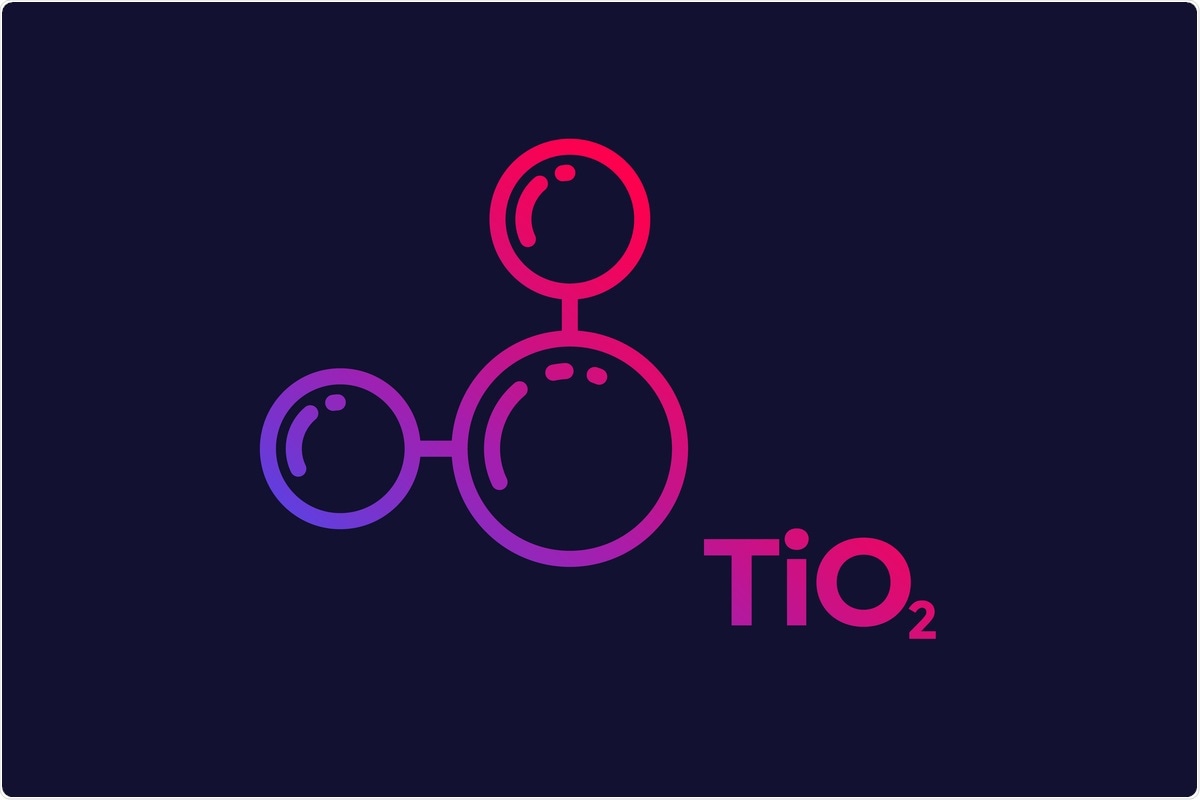Potent extended anti- SARS-CoV-2 effect of titanium dioxide surface coatings
Severe acute respiratory syndrome coronavirus 2 (SARS-CoV-2), the causative agent of coronavirus disease 2019 (COVID-19), is transmitted via airborne droplets and surface contamination. Decontamination of surfaces using alcohol or other antimicrobial agents requires repeated applications.
 Study: Rapid inactivation of SARS-CoV-2 by titanium dioxide surface coating. Image Credit: nexusby/ Shutterstock
Study: Rapid inactivation of SARS-CoV-2 by titanium dioxide surface coating. Image Credit: nexusby/ Shutterstock
A team of researchers has explored the possibility of coating surfaces with Titanium dioxide (TiO2) as a tool to inactivate SARS-CoV-2, thereby controlling the virus. This study has been published in Wellcome Open Research.
SARS-CoV-2 transmission
SARS-CoV-2 is transmitted through respiratory droplets, which can contaminate various surfaces. The virus remains viable on these surfaces for hours and sometimes even days, depending on different factors. These surfaces can include external surfaces of personal protective equipment (PPE) and surgical masks.
Even after obligatory wearing of face masks and social distancing measures, there has been a rise in SARS-CoV-2 cases globally. Contaminated surfaces may be contributing to the transmission.
TiO2 coating demonstrates bactericidal and antiviral action
While chemical decontamination is a temporary measure to contain the virus, photocatalytic surfaces can permanently destroy microbes under normal ambient lighting conditions. Illumination of TiO2 produces highly oxidizing free radicals that oxidize and inactivate microbes. TiO2-coated surfaces have shown lowered bacterial load. They have shown promising results against influenza and rotavirus. The radicals do not induce antimicrobial resistance, an important cause of concern in the medical context. TiO2 is non-toxic and chemically stable and is currently used for implants.
Due to these reasons, coating surfaces with TiO2 is a promising infection control measure, especially in healthcare facilities.
In this study, the researchers have tested the antiviral property of surfaces coated with TiO2 against SARS-CoV-2.
TiO2 coating and illumination
TiO2 based solution or TiO2 and silver (Ag) solution were sprayed onto ceramic tiles wiped with a neutral disinfectant. The following surfaces were tested for virus stability:
- Sterile untreated Sterilin standard Petri dish
- TiO2-coated 45 × 45 mm ceramic tiles
- TiO2–Ag-coated 45 × 45 mm ceramic tiles (Ti:Ag atomic ratio 1:0.04).
The tiles were then stored for 2 to 4 months before use. Surfaces were exposed to ambient laboratory light for one hour before the start of each experiment. This results in a steady state of radical generation.
The tiles were inoculated with the virus, and the surface was illuminated with the same light for zero to six hours. At intervals, the virus was recovered from the surfaces, and target cells were infected.
Viral inactivation
Two different viral strains were tested in this study:
- SARS-CoV-2 Spike pseudotyped HIV-1 luciferase virus tested in 293T cells
- Fully infectious SARS-CoV-2 virus tested in Vero E6 cells.
SARS-CoV-2 inactivation by TiO2 surface coating
The pseudotype virus count decreased 10,000 times after one hour of illumination on the TiO2– and TiO2–Ag-coated surface. Viral viability was not affected by light alone.
SARS-CoV-2 was significantly inactivated on the TiO2 surfaces after 20 minutes of illumination, and no active virus was detected after five hours. However, SARS-CoV-2 on the untreated surface was fully infectious even after five hours post-addition of the virus. TiO2–Ag surfaces were less effective than TiO2 alone, but the difference was not significant.
The researchers infer that the viruses coming in contact with the surface were immediately inactivated.
Therefore, tiles coated with TiO2 were able to inactivate SARS-CoV-2 under ambient indoor lighting with an 87% reduction in viral counts at one hour and complete loss after five hours of exposure.
Limitations of the study
The laboratory inactivation experiments were carried out with large numbers of viruses. The coated material was brought into contact with the virus at the beginning of the experiment, and the decay of the entire virus population was measured. This does not necessarily replicate the practical scenario of a coating designed to keep surfaces free of viral particles and how quickly an individual virus is inactivated.
If the coated surface were contaminated with a large virus-containing sample, the thick layer of the contamination would not allow light to reach the photocatalyst. This would diminish the inactivation capability of the surface. In this case, washing with water and rough cleaning would be required for clearing gross contamination.
This study did not include an unsprayed control tile. Also, the activity of the coated surface may be different for droplets from infected individuals since these droplets may contain mucus. However, using respiratory secretions for experiments is not a feasible option.
Conclusion of the study
TiO2 coating was effective in containing SARS-CoV-2 under typical hospital lighting. This makes it an ideal coating for enhancing the protection provided by surgical masks and PPE and other hospital surfaces likely to be contaminated.
Within the context of emerging viral variants of concern, TiO2 coatings can prove to be an important intervention in containing SARS-CoV-2, particularly in health care facilities.
- Micochova, P. et al. (2021) "Rapid inactivation of SARS-CoV-2 by titanium dioxide surface coating", Wellcome Open Research, 6, p. 56. doi: 10.12688/wellcomeopenres.16577.1.
Posted in: Medical Science News | Medical Research News | Disease/Infection News
Tags: Alcohol, Antimicrobial Resistance, Contamination, Coronavirus, Coronavirus Disease COVID-19, Decontamination, Disinfectant, Free Radicals, Health Care, Healthcare, HIV, HIV-1, Hospital, Implants, Infection Control, Influenza, Laboratory, Luciferase, Personal Protective Equipment, Petri Dish, PPE, Research, Respiratory, Rotavirus, SARS, SARS-CoV-2, Severe Acute Respiratory, Severe Acute Respiratory Syndrome, Syndrome, Virus
Source: Read Full Article



